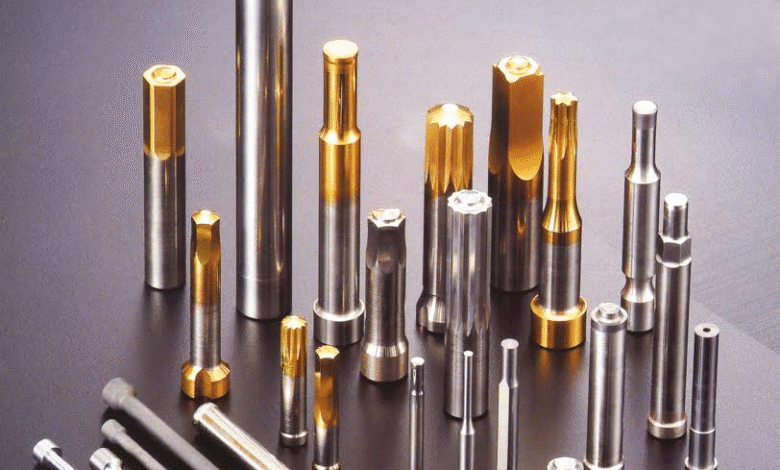Precision Inside and Out: Endoscope Channels and Carbide Punches

The cooperation between multiple specialized elements is essential to develop advanced medical equipment. That is why in endoscopy, all components, starting with optics and ending with fluid management, are designed with a high level of precision, being aimed at providing effective, safe, and less invasive diagnostics.
Among these, the endoscope air water channel plays a critical role in maintaining visibility during procedures, while carbide punches, essential tools in manufacturing, contribute to the high-precision fabrication of such medical devices.
This article explores the functions and interdependence of the endoscope air water channel and carbide punches, highlighting how engineering accuracy on both macro and micro levels supports the safety and performance of modern endoscopic tools.
It is through consideration of the role of each of these elements that we may gain a greater appreciation of the role of accuracy in design and implementation throughout the medical device manufacturing sector.
Understanding the Endoscope Air Water Channel:
The endoscope air water channel is a vital structural element that facilitates the delivery of air and water to the distal end of the endoscope. This aspect enables clinicians to keep a clear view of the field in operation by washing out debris or secretions and insufflation of anatomical cavities. The air water channel is usually manufactured out of medical grade polymers and has to be resistant to repeated cleaning, pressure and chemicals without affecting functionality.
This channel is placed in the insertion part of the endoscope and is designed to allow the delivery of directed amounts of fluid and gas in a controlled manner. The combined valve system attached to the channel allows clinicians to switch between air and water functions within the same procedure. The effective functioning of the air water channel promotes visual precision and procedural success particularly in gastrointestinal, bronchoscopic and urological investigations.
Malfunctions or contamination in the endoscope air water channel can lead to complications, including impaired visibility and increased infection risk. Because of this reason, strict requirements of the manufacturing accuracy and sterilization after use are provided. Such components like this channel have to undergo rigorous regulatory and performance requirements and hence the necessity to ensure quality in each production batch.
The Function and Significance of Carbide Punches in Manufacturing:
Carbide punches are high-precision tooling components used in the manufacturing of intricate parts for various industries, including medical device production. These punches are made of mostly tungsten carbide, a substance renowned in its extreme hardness and lack of wear, and can therefore keep punched dimensions accurate after repeatedly being used in harsh conditions.
In medical device manufacturing, carbide punches play a key role in the fabrication of fine channels, ports, and internal features, including those found in endoscopic components. For example, during the production of endoscope air water channels, carbide punches may be used to form precise pathways that allow fluid and gas to flow with minimal resistance. Their use guarantees consistency, lesser variance and compact production runs.
The benefits of carbide punches extend beyond mechanical precision. They last long which decreases the tool changing intervals hence cutting down on operation cost and production downtime. In addition to that, they are compatible with automated production systems, making them difficult to avoid in the achievement of scale needed in contemporary medical device supply chains.
The quality of carbide punches directly influences the accuracy of the end products. Here, it should be noted that a single defect or deviation in punch geometry can affect the functionality of key components. The uneven geometry of the endoscope can result in inefficiencies in performance or regulatory non-compliance. Therefore, such tools undergo a tight quality control regime consisting of dimensional checks, surface finish tests, and resistance testing.
The Role of High-Precision Components in Medical Device Reliability:
In medical equipment, reliability is not a subject of discussion. The equipment deployed in a diagnostic or surgical activity should be accurate, reliable, and safe. High-precision components, such as the endoscope air water channel and those manufactured with carbide punches, play an essential role in achieving this goal.
In endoscopy, a change in channel diameter or misalignment can lead to inadequate fluid dynamics with implications on image quality and procedural effectiveness. Likewise, a non-uniform thickness or shape of materials may also interfere with effective cleaning, creating a possibility of an infection. This is not an acceptable margin in clinical environments where the safety of the patient should be a major priority.
Carbide punches ensure that production tolerances are tightly controlled, minimizing variability in component dimensions. This accuracy, in its turn, can be transferred to the highly dependable endoscopic tools that will hold up to the processes of repeated sterilization and use.
Additionally, tooling precision facilitates regulatory affairs since devised parts are invariably of international standards like ISO 13485 on medical devices. This conformity is particularly significant to firms that sell to the international markets where product safety records and traceability is highly implemented.
Streamlining Performance Through Material and Design Excellence:
The design optimization and material selection play a key role in promoting efficiency and functionality of medical components. In the case of endoscope air water channels, selecting materials that resist corrosion, retain flexibility, and endure sterilization processes is critical. More recent developments in polymer chemistry and extrusion technology provide tubing with smoother flow paths, higher sealing integrity and greater chemical resistance.
Parallel advancements in carbide punches have focused on improving material uniformity, surface coating technologies, and micron-level precision. Coatings such as titanium nitride (TiN) and diamond-like carbon (DLC) are frequently applied to carbide punches to reduce friction and increase resistance to wear.
When material science gets equated to the ergonomic and functional design, then the outcome would be more dependable and easier to work with equipment. To illustrate, the cleaner internal surfaces of air water channels will decrease the deposits of residue, which will ease the cleaning procedure and prolong the life of the equipment.
Computer-aided simulation is also used by designers to anticipate and fix flow problems or stress points in the mechanism prior to full production. The resultant effect is an exquisitely developed product with enhanced user handling, patient safety, and operational efficiency.
Since then, superiority in material and design is not only a production goal- it is a clinical necessity that pushes the recurring advancement across the medical device environment.
Conclusion:
Accuracy is the key to new medical devices. Components like the endoscope air water channel and the carbide punches used in their production exemplify how attention to detail and engineering excellence directly impact clinical performance and patient safety.
With the medical device industry constantly developing, it will be necessary to keep high standards in the design of components, tooling, and materials. Be it as a complex internal channel or high wear punch tool, every component is vital in providing the quality and dependability demanded in the modern day health care surroundings.



